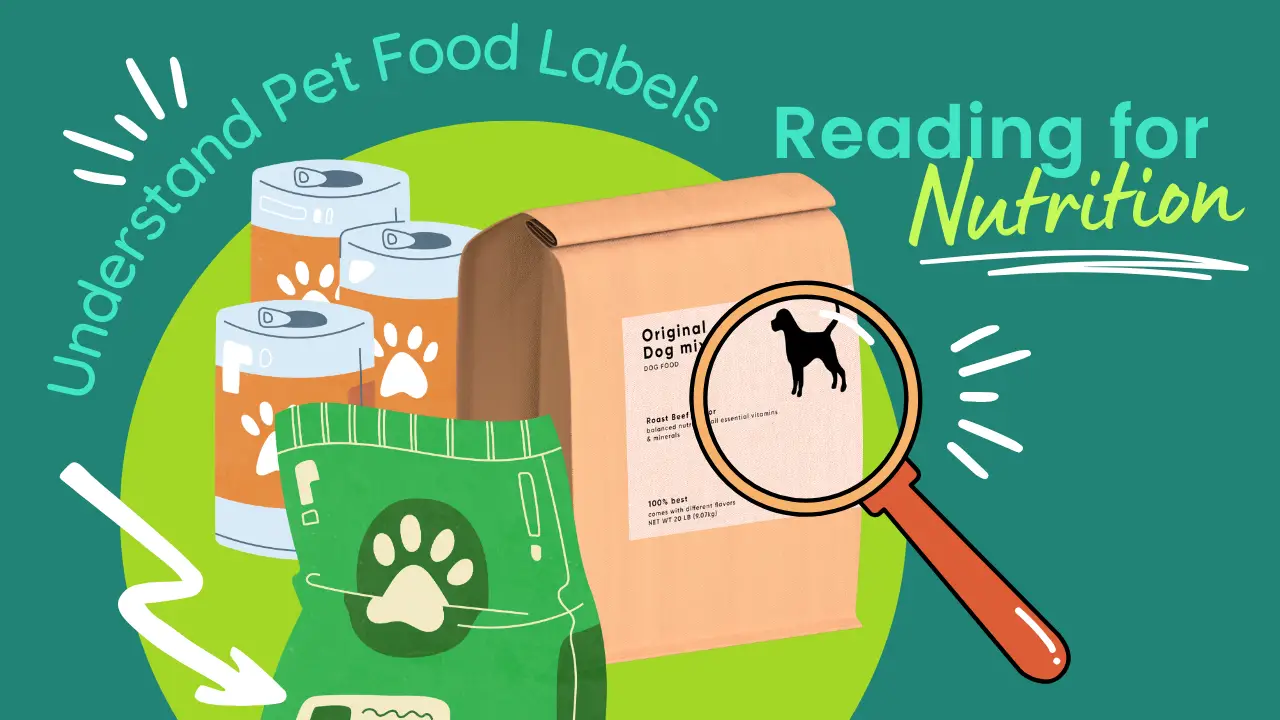Why is it important to understand pet food labels?
It’s crucial for pet owners to understand pet food labels so you can make informed decisions about your furry friend’s nutrition. Knowing how to read a pet food label allows you to:

- Evaluate the quality of the ingredients
- Understand the nutritional value
- Avoid unhealthy or unsuitable ingredients
- Ensure your pet’s food meets their dietary needs
- Compare between different pet food products
- Get what you pay for and not be misled
Making sense of pet food labels takes some work but every detail provides valuable intel.
What should I look for on pet food labels?
Focus on these key areas when assessing a pet food product:

Read our Smart Poodles - Smart Tricks eBook for only $2.99
Dive into a treasure trove of engaging tricks and tips designed specifically for your poodle!
Ingredients
Ingredients are listed in order of quantity with the main components first.
- Meat, poultry or fish should feature early on. The first ingredient is ideal but top 3 is reasonable.
- Whole meats are best, e.g. chicken, beef. Meal, by-products or digest indicate lower quality.
- Look for nutrients like vitamins, omega oils, glucosamine etc.
- Avoid artificial preservatives and colorings. These offer no nutritional value.
- Check carb sources. Whole grains are best, avoid fillers like corn or wheat.
Guaranteed Analysis
This shows minimum percentages of key nutrients. Compare to your pet’s needs. As a guide:
- Protein – Cats 30%, dogs 18%
- Fat – Cats 20%, dogs 5%
- Fiber – Cats 3-4%, dogs 3-5%
- Moisture – Cats 60-70%, dogs 60-75%
Feeding Guidelines
Follow carefully to avoid over or underfeeding. Check calories per cup or tin.
Nutritional Adequacy Statement
Indicates the food meets pet nutrition standards set by the Association of American Feed Control Officials (AAFCO).
Calorie Statement
Details the calories per gram or cup. Useful for weight management.
How can understanding labels help my pet?
Reading labels empowers you to truly comprehend what’s in your pet’s bowl. You can detect low quality or unsuitable ingredients and ensure your furry friend gets all the nutrients they need. This promotes good health, longevity and an optimal quality of life.
Please share your experiences with reading pet food labels below! Have you discovered any great pet foods through label reading? Or found any worrying ingredients we should all avoid? Let us know in the comments!
Marko is the founder and author at PoodleHQ, where he blends profound expertise with formal training in Animal Behavior and Canine Genetics. With multiple generations of poodles under his care, he’s a breed connoisseur, honored with the Canine Care Excellence Award and lauded by the International Pet Enthusiasts Association.

